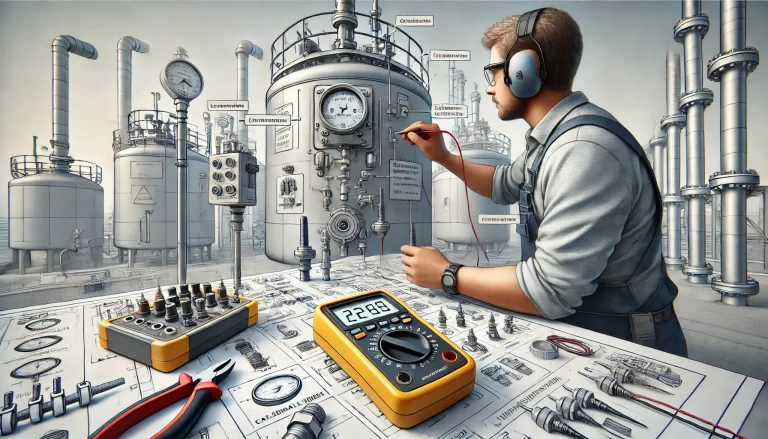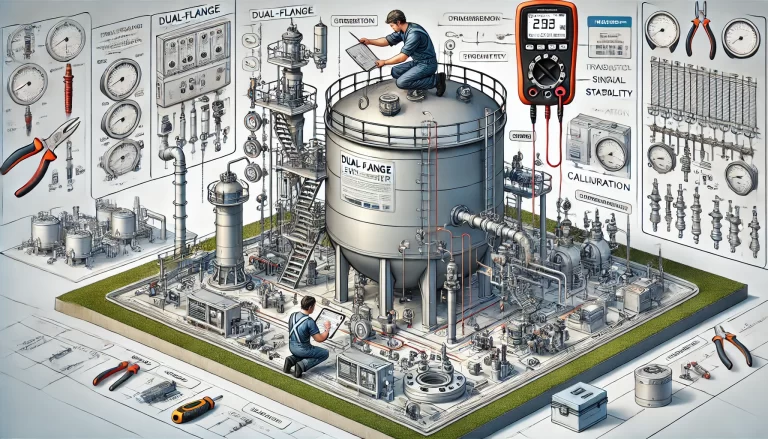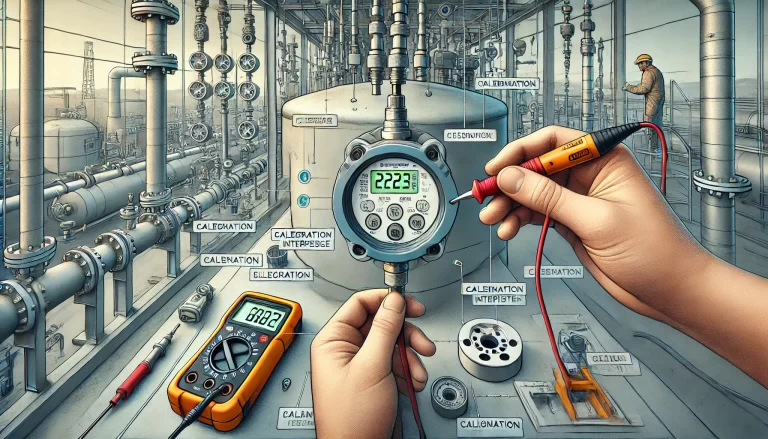Introduction
Dual-flange level transmitters are widely utilized in industries such as chemical processing, petroleum, natural gas, and power generation for precise level measurement. However, the complexity of operational environments and various influencing factors can lead to diverse malfunctions over extended use. Effective troubleshooting not only ensures long-term operational stability but also significantly reduces maintenance costs.
This guide outlines common issues encountered with dual-flange level transmitters and provides actionable troubleshooting steps to assist engineering and technical personnel in swiftly identifying and resolving problems.

Common Issues and Troubleshooting Steps
1. Unstable Output
Possible Causes:
Electromagnetic interference affecting the transmitter signal.
Loose or faulty signal wiring.
Contamination or blockage of the sensor diaphragm.
Significant temperature or pressure fluctuations.
Troubleshooting Steps:
Inspect Power Supply and Wiring: Verify the transmitter’s power voltage and wiring are within specifications. Ensure terminal connections are secure and free of oxidation, as poor connections can cause signal fluctuations or delays.
Address Electromagnetic Interference: Use shielded cables and ensure that the electromagnetic shielding is intact. Consider installing electromagnetic interference filters near signal lines if required.
Clean the Sensor Diaphragm: Regularly clean the diaphragm, especially in environments with chemical fluids that may cause deposition or blockage. Use gentle cleaning agents or distilled water to avoid damaging the diaphragm.
Calibrate for Temperature and Pressure: Check whether the operating environment’s temperature and pressure exceed design limits. Calibrate the transmitter’s compensation settings as needed to ensure functionality within the specified range.

2. Display Inaccuracy
Possible Causes:
Variations in the density of the measured medium.
Zero drift.
Improper installation angle or inaccurate positioning.
Troubleshooting Steps:
Verify Medium Properties: Changes in liquid density due to temperature or composition shifts can result in measurement errors. Measure the actual density with a densimeter and adjust the transmitter settings or calibration accordingly.
Calibrate Zero Point: Perform a zero-point calibration, particularly after prolonged use or significant environmental changes. If the issue persists, consider replacing the sensor.
Check Installation Position: Ensure the installation angle and position conform to the manufacturer’s guidelines. Misaligned installations, particularly in high-temperature or high-pressure environments, may lead to inaccurate readings.
3. No Output or Signal Loss
Possible Causes:
Power failure.
Faulty wiring or connectors.
Sensor damage.
Communication protocol issues (for digital signal transmitters).
Troubleshooting Steps:
Inspect Power Supply: Use a multimeter to check for stable power voltage. If the voltage is too low or fluctuating, examine the power module or replace the battery (if applicable).
Check Wiring Connections: Inspect all signal wiring for breaks or shorts. Pay special attention to the signal output line for secure connections.
Assess Sensor Condition: If there is no output, examine the sensor for physical damage. Replace it if damaged or severely contaminated.
Verify Communication Protocols: For transmitters using protocols such as HART or Modbus, ensure communication lines and protocol settings are correct. Use diagnostic tools to confirm stable data transmission.

4. Slow or Excessive Response
Possible Causes:
Improper response time settings on the transmitter.
Filter parameter misconfiguration in the control system.
External interference causing data fluctuations.
Troubleshooting Steps:
Adjust Response Time: Set the response time to match application needs. For slow-changing liquid levels, increase the response time to reduce unnecessary fluctuations.
Fine-tune Filter Settings: Verify that the filter settings in the control system balance responsiveness with signal stability.
Address External Interference: Identify and mitigate nearby sources of strong electromagnetic interference. Use shielding devices to isolate the transmitter.
5. Signal Drift or Abnormal Readings
Possible Causes:
Sensor fatigue after prolonged use.
Faults in the transmitter’s internal circuitry.
Changes in the measured medium (e.g., temperature variations or sediment accumulation).
Troubleshooting Steps:
Check Sensor Condition: Inspect the sensor for visible damage or wear. Use built-in diagnostic tools to identify potential issues and replace the sensor if necessary.
Inspect Transmitter Circuitry: Use diagnostic tools to evaluate the internal circuitry. Replace any defective components.
Remove Medium Contamination: Inspect for sediment or impurities in the liquid. Clean the sensor and remove deposits to restore accurate operation.
Preventative Maintenance Tips
To minimize failures and enhance the reliability of dual-flange level transmitters, follow these maintenance recommendations:
Regular Calibration: Calibrate transmitters periodically, especially in environments with significant liquid level fluctuations or changing conditions. A three-month calibration schedule is advisable.
Routine Cleaning: Clean sensor diaphragms monthly, particularly in high-viscosity or chemically aggressive environments, to prevent blockages and residue accumulation.
Monitor Environmental Conditions: Continuously monitor environmental parameters such as temperature and pressure to ensure they remain within operational limits. Consider installing environmental monitoring systems for real-time updates.
Adhere to Installation Guidelines: Follow manufacturer’s recommendations for proper installation. Verify vertical alignment and liquid inlet positioning to maintain measurement precision.
Provide Technical Training: Conduct regular training sessions for operators and maintenance personnel to ensure familiarity with operational principles, troubleshooting techniques, and common issues.

Conclusion
Dual-flange level transmitters play a crucial role in industrial automation by ensuring accurate and reliable level measurements. This guide has highlighted common problems, their causes, and effective troubleshooting strategies, along with preventive maintenance practices.
Timely fault diagnosis and proactive maintenance can extend equipment lifespan and prevent costly production interruptions. By following the guidance provided here, engineers can effectively address common issues and maintain the stable operation of dual-flange level transmitters.
